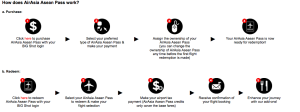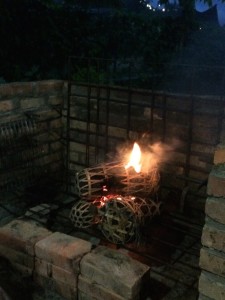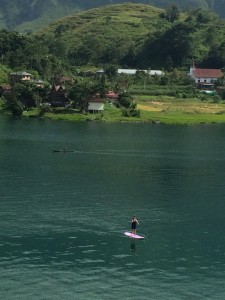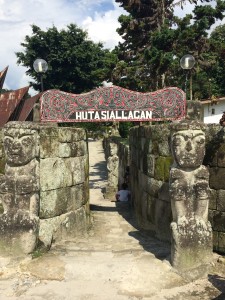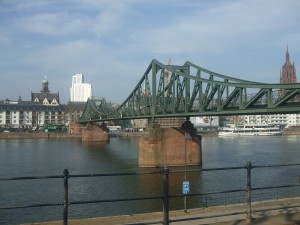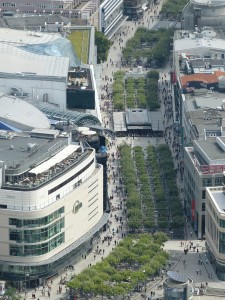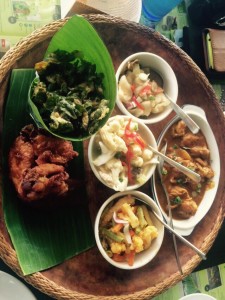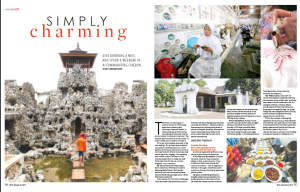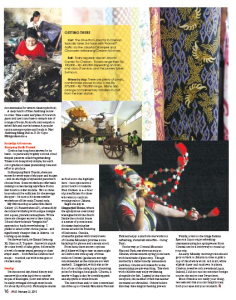Having just rounded up a two-month journey courtesy of the AirAsia ASEAN pass, I thought it would be timely to reflect both on my experience of using this innovative travel resource, and my occasionally difficult adjustment from business traveler to Weekend Explorer (read, budget traveler.) #firstworldproblems
But before I launch into the tale, I acknowledge that people may not have the time to read a lengthy blog post – let alone three. So here is the key takeaway. Jetstar is the King of Budget Airlines in Asia, I will never fly AirAsia again.
Now on to our story.
First, kudos to AirAsia’s marketing team. They are definitely unsurpassed in the Asian budget airline realm for coming up with innovative and attractive campaigns for the masses – of which I am but one. The AirAsia ASEAN Pass is one such initiative.
As the first promotion since the fatal Dec. 28 crash of AirAsia 8501 (which killed all 162 people on board enroute from Surabaya to Singapore) it was important for the ASEAN Pass to manifest a vision beyond cheap travel. Thus, Air Asia Group CEO Tony Fernandes explained, in advance of this year’s anticipated ASEAN Economic Community and Open Skies Policy, “the [ASEAN] pass allows us to bridge communities and attract more foreign tourists to the region. It’s the perfect instrument to promote ASEAN integration.” I should add that I had the privilege of meeting Mr. Fernandes at the World Economic Forum on East Asia in Manila last year, and that we had a charming and witty conversation about Malaysian politics. I respect him, and his accomplishments, immensely. But would that be enough to save AirAsia this customer?
 Bu
Bu t I am getting ahead of myself. What was the promotion that launched this saga in the first place? In a nutshell, the AirAsia ASEAN Pass is a pre-purchased travel pass that allows travelers to book air journeys with credits, at least 14 days or more before the departure date to travel to more than 140 routes across ASEAN’s ten member states. Travelers can opt for a 10 credit/ one month pass for MYR 499, or a 20 credit / two month pass MYR 888. The clock starts counting down from the first day of travel, not date of purchase. The two step process works as follows.
t I am getting ahead of myself. What was the promotion that launched this saga in the first place? In a nutshell, the AirAsia ASEAN Pass is a pre-purchased travel pass that allows travelers to book air journeys with credits, at least 14 days or more before the departure date to travel to more than 140 routes across ASEAN’s ten member states. Travelers can opt for a 10 credit/ one month pass for MYR 499, or a 20 credit / two month pass MYR 888. The clock starts counting down from the first day of travel, not date of purchase. The two step process works as follows.
As a relatively early adopter, I was able to capitalize on a number of advantages from the 20 credit pass. This worked for me primarily because of my own scheduling flexibility. At my time of purchase, eligible flights below two hours were valued at one credit, while flights of two hours and above were valued at three credits. However, the number of one credit flights has decreased since then, as has flight availability. (Non-Malaysian travelers may be able to take advantage on the ringgit’s recent drop vis-à-vis the USD and still enjoy discounted travel benefits.)
I took four separate (AMAZING) trips with the pass – Singapore, Borneo (Kota Kinabalu, Sandakan, Bandar Seri Begawan, Miri and Kuching), North Sumatra (Medan), and Kuala Lumpur. There were some minor hiccups here and there (mostly due to fluctuating availability and the unpredictable performance of the AirAsia website). But the REAL nightmare happened on the final leg of the journey – prompting me to write this post.
Challenges began when, as usual, I tried to pre-book 20k of check-in luggage for each leg of the journey. (I’d had no problems booking Singapore and Borneo, but Medan and Kuala Lumpur were proving to be a huge headache.) It just WASN’T working, no matter what I did. So I tried to get in touch with AirAsia customer service to resolve this seemingly benign issue.
Attempt 1: Live Chat
 Air Asia’s live chat option is a great, cost effective way to communicate with irate/frustrated customers – in theory. The challenges are as follows. First, the queues are horrendous – lasting anywhere from 45 to 90 minutes (in my four attempts over the course of several days, anyway.) Second, if you are not vigilantly at your computer for every waking moment of this time, you instantly lose your place. (I made the mistake of taking a bathroom break to discover that my computer had gone to sleep and I was kicked out of the queue with only 10 minutes to go!) No problem, this was my fault. So I brilliantly set a movie to play in the background of my laptop to maintain an active connection, and went on with the mundane tasks of the day. FINALLY I got in touch with a representative, who, after learning about my problem, told me that the issue might be with my browser and/or cookies. Now I am not the most IT savvy person (by far) but even I shouldn’t have been THIS dumb. Once I cleared my history as instructed, he told me to close the browser and try again. Great advice – except closing my browser OBVIOUSLY disabled the chat. (Duh!) Now, when you register for the service, they ask for your email address and/or mobile phone number. (I’d included both.) So I waited expectantly for an email to ping or my phone to ring. Neither happened. I attempt to register for a new chat, only to find the wait time at 95 minutes. FORGET that. So I proceed to option B.
Air Asia’s live chat option is a great, cost effective way to communicate with irate/frustrated customers – in theory. The challenges are as follows. First, the queues are horrendous – lasting anywhere from 45 to 90 minutes (in my four attempts over the course of several days, anyway.) Second, if you are not vigilantly at your computer for every waking moment of this time, you instantly lose your place. (I made the mistake of taking a bathroom break to discover that my computer had gone to sleep and I was kicked out of the queue with only 10 minutes to go!) No problem, this was my fault. So I brilliantly set a movie to play in the background of my laptop to maintain an active connection, and went on with the mundane tasks of the day. FINALLY I got in touch with a representative, who, after learning about my problem, told me that the issue might be with my browser and/or cookies. Now I am not the most IT savvy person (by far) but even I shouldn’t have been THIS dumb. Once I cleared my history as instructed, he told me to close the browser and try again. Great advice – except closing my browser OBVIOUSLY disabled the chat. (Duh!) Now, when you register for the service, they ask for your email address and/or mobile phone number. (I’d included both.) So I waited expectantly for an email to ping or my phone to ring. Neither happened. I attempt to register for a new chat, only to find the wait time at 95 minutes. FORGET that. So I proceed to option B.
Attempt 2: Indonesia Customer Service Hotline
 I get through to the call center relatively quickly, only to be greeted by someone with barely comprehensible English. (Now keep in mind that I’ve both lived and worked around Europe and Asia, have resided in Indonesia for 18 months, and am pretty good at deciphering different accents.) After a long back and forth, I finally manage to communicate my challenges to him, and he proceeds to pull up all of my upcoming itineraries. “No problem,” he explains, “the luggage is already booked,” which explains why I’ve had challenges trying to pay on the website. “OK,” I reply, “but why isn’t it showing up on my itinerary?” He sends me a new link, and sure enough, the luggage is right there where it should be. Phew – problem solved. Right?
I get through to the call center relatively quickly, only to be greeted by someone with barely comprehensible English. (Now keep in mind that I’ve both lived and worked around Europe and Asia, have resided in Indonesia for 18 months, and am pretty good at deciphering different accents.) After a long back and forth, I finally manage to communicate my challenges to him, and he proceeds to pull up all of my upcoming itineraries. “No problem,” he explains, “the luggage is already booked,” which explains why I’ve had challenges trying to pay on the website. “OK,” I reply, “but why isn’t it showing up on my itinerary?” He sends me a new link, and sure enough, the luggage is right there where it should be. Phew – problem solved. Right?
Well, the problem was solved for Jakarta – Medan and Medan – Kuala Lumpur. But on the last leg of my journey, after a lovely lunch with an old friend, I made my way early to the KLIA Ekspress train for the airport , since there are worse places to while away an afternoon than Kuala Lumpur International Airport. But this is where the true trials and service breakdowns begin.
I check in at a kiosk, and wonder why I have not been given an option to print out baggage tags. Oh well, no problem here – in Medan even though you CAN print out your tags at the kiosk, the ground staff end up ripping them up and printing new ones at the desk. So maybe this is a new security measure. I haul ass to the other end of the airport (for some bizarre reason the kiosks and the baggage drops are at opposite ends of the airport.) With a smile, I put my suitcase on the scale and hand over my travel documents. “Everything is in order with your boarding pass,” she explains, “but you have not pre-booked luggage. So I cannot check your bags in.” “But I have,” I say wearily, and proceed to recount the entire customer service saga to date. “Sorry,” she replies, “but if it’s not in my system, there’s nothing I can do.” “Fair enough,” I say, “but is there a supervisor I can speak with to attempt to resolve this situation?” She directs me to another counter with a long queue.
Forty five minutes later, only two people have been helped – one of whom has been yelling non-stop for 30 minutes. (I initially thought he was a complete jerk, but by the end of my own experience I was slightly more empathetic!) A little over an hour later I finally get through to the representative. “You are in the wrong line,” he tells me, “there are no supervisors here, and you actually need to go to the baggage payment counter over there.” ANOTHER line. At this point, I nearly blow a gasket I have been at this for nearly two hours, and have gotten exactly nowhere.
From arriving at the airport 3.5 hours before my flight, I am now running dangerously close to missing it. He takes one look at my face (at the threshold of bursting into tears, yelling with true rage, or hysterically laughing), and offers to walk me over to the right desk. (AirAsia staff at KLIA have an odd habit of running around to different posts so I can’t even find the initial representative who sent me on the wild goose chase to begin with!) I explain my problem to him, and he gives me the same reply – if it’s not in THEIR system, there’s nothing they can do. Oh, and there’s something else. Not only is it significantly more expensive to book luggage at the airport – there is a weight limit of 15 kg. So there is a good chance my bag won’t even make it on the flight.
As we walk over to my fourth queue of the day, I explode. (In typical Jennifer fashion, I explain in advance to the representative that I am not angry at him directly and that I appreciate his attempt to help me, but that I am overwhelmed by the obstacles I am facing given a situation that is in no way my fault.) He goes up to the counter and asks his colleague to take care of me, and then returns to his post.
Paradoxically, this is the nicest AirAsia representative I’ve dealt with so far – and this is the point where I get most irritated. Because he tells me the truth. He is very sympathetic to my plight, and agrees that it does not make sense that I would book luggage for three out of the four legs of my journey, and not the fourth. He tells me frankly that this is not the first time this has happened. But there is NOTHING he, or anyone, can do. I tell him step by step what has happened to this point, and he analyzes every misstep.
- They HAVE been having issues with their website.
- They do NOT always keep records of customer service interactions. So my strongest point of proof that this was not a problem on my end would become a “my word against theirs” scenario, since all I had on my end was a record from my mobile phone carrier that a call had taken place – but not what was said.
- There is a strictly enforced 15 kg limit at the airport.
- I can try to seek recourse after the fact, but nothing is likely to happen.
So here I am, facing missing my flight, throwing out a quarter of the contents of my check-in luggage, or. . .? He tells me that he can give me 1kg “grace” and that I can either pay a steep overweight fee or put some items in my carryon. “But” . . . , I say, being the law/policy-abiding Oregonian that I am, “you have a clear 7kg limit on hand carry luggage. Removing 5 kg of items from my bag will put me way over this.” “No problem,” he says confidentially, “we NEVER weigh hand luggage.”
So the net result – and the net weight on the damn plane – is ultimately the same. But AirAsia has lost a number of customers that day. I am one of them. (As, I’m sure, are some of the others in the “fake” supervisor queue.)
The sad thing is that this could have been resolved so easily. Having been a consultant (arguably one of the more challenging customer service jobs out there), I am truly empathetic to those sitting on the other side of the desk. Where I lose my patience, however, is when systems break down. What could AirAsia have done differently?
 Accountability. The thing that riled me the most was that at every step of the way, my challenges were someone else’s fault/problem. Not only could no one resolve my relatively minor problem – no one could even direct me on how to fix it.
Accountability. The thing that riled me the most was that at every step of the way, my challenges were someone else’s fault/problem. Not only could no one resolve my relatively minor problem – no one could even direct me on how to fix it.
 Empowerment. When you have ridiculously rigid policies, your customer service representatives end up finding their own ways to cut corners which short-change the airline and do nothing to make a customer feel valued. My check-in luggage issue was a drop in the bucket for AirAsia, but felt like the struggle for my life on my end.
Empowerment. When you have ridiculously rigid policies, your customer service representatives end up finding their own ways to cut corners which short-change the airline and do nothing to make a customer feel valued. My check-in luggage issue was a drop in the bucket for AirAsia, but felt like the struggle for my life on my end.
 Record Keeping. By far the most shocking was the admission that records are not always kept of customer service interactions – and that there is no single CRM system to link the different parts of the chain. Now perhaps Malaysians are by nature less litigious than we Americans, but wouldn’t it simply be good business practice (and common sense!?) to cover one’s tracks?
Record Keeping. By far the most shocking was the admission that records are not always kept of customer service interactions – and that there is no single CRM system to link the different parts of the chain. Now perhaps Malaysians are by nature less litigious than we Americans, but wouldn’t it simply be good business practice (and common sense!?) to cover one’s tracks?
 Quality. Traveling on a budget airline does not have to feel like a budget experience. Reflecting on my recent travels with AirAsia, two things stood out. First, I really felt like a meaningless cog in a big machine. If I were a dissatisfied customer, no worries – there a millions of others out there. Second, the quality of the passengers themselves was surprisingly low – by this I mean the seatbelts off up the minute the plane lands and elbow old ladies in the ribs to get bags variety. You get the customers you cultivate. That means fewer of me, and more of them. And who wants that?
Quality. Traveling on a budget airline does not have to feel like a budget experience. Reflecting on my recent travels with AirAsia, two things stood out. First, I really felt like a meaningless cog in a big machine. If I were a dissatisfied customer, no worries – there a millions of others out there. Second, the quality of the passengers themselves was surprisingly low – by this I mean the seatbelts off up the minute the plane lands and elbow old ladies in the ribs to get bags variety. You get the customers you cultivate. That means fewer of me, and more of them. And who wants that?
 Longevity. In the short run, this philosophy will hold true. For every one of me there are millions more in the wings. But as experiences such as mine are recounted, and, well, experienced on an exponential scale – who is left to ensure the airline’s sustainability? Certainly not the customers with the purchasing power to make a long-term difference on the airline’s bottom line. And that’s just a crying shame. . .
Longevity. In the short run, this philosophy will hold true. For every one of me there are millions more in the wings. But as experiences such as mine are recounted, and, well, experienced on an exponential scale – who is left to ensure the airline’s sustainability? Certainly not the customers with the purchasing power to make a long-term difference on the airline’s bottom line. And that’s just a crying shame. . .
Read the second part of the series, A Tale of Two Budget Airlines –Part II of III: Why Jetstar is the King of Budget Airlines in Asia, here.








